I’m going to show my age and admit that I have fond memories of hanging out with friends and cranking their parent’s original JBL L100 Century speakers listening to the then new Led Zeppelin, Black Sabbath, and Pink Floyd albums. If you lived through the 1970s, someone you knew had a pair of JBL L100s. Between their release in 1970 and the end of their production run in the mid-1980s, JBL sold more L100s than any other speaker in their line (and the entire production volumes of many of their competitors). One of the most recognizable commercials of the 1980s, while not a JBL commercial, prominently displayed a pair of L100s. If you lived through the 1980s, chances are pretty good you remember either the print of the TV version of this iconic ad for Maxell audio cassette tapes.

Back in 1970, a new pair of L100s would set you back $546 (MSRP) so they were not cheap but not completely out of reach. Likewise, the JBL L100 Classic MKII that recently arrived here at eCoustics for review, fits into that same category at roughly $4,800 a pair. While that price does put the new JBL in a very crowded market segment with some strong competition, a closer look at the economics shows that $546 in 1970 equates to $4,429.86 today per OfficialData. So, adjusted for inflation, the “Classic” is priced only around 10% higher than the original, upon which it is based.
The Original Party Speaker
In the 1970s, the L100 was not exactly an “audiophile” favorite but was instead an audio hobbyist’s or music lover’s aspirational speaker: a sign that one had “arrived.” That original L100 could be found blaring the Top-40 tunes of the day in many dens and living rooms. It was, in the truest sense of the word, a “Loud”speaker. When you wanted to jam, you fired up your L100s and threw the Rolling Stones or The Who on the turntable.
JBL L100s set the stage for countless parties back in those days. For many of us, they provided the soundtrack of our college career as we inherited a pair from our parents or bought them used as the older generation upgraded. By the late 80s and early 90s you could pick up a used pair of JBL L100s for $250 if you were lucky and they were then, as always, ready to rock.

Today, a solid pair of original L100’s sells for between $1,500 and $2,000. In some ways, the new version’s biggest competitor may be its progenitor. So it makes sense to compare the new JBL L100 Classic MKII (aka MK2) both to other current loudspeakers in the same price range as well as to the original L100. That was my first challenge: source a good condition pair of original L100s. I managed to find a pair of L100s produced in 1976 that had been serviced recently so they were ready for immediate use.
Here’s a tip: never buy any vintage audio in unknown condition and just plug it in and expect it to work. At the very least, a good cleaning is almost always needed and at worst, several parts may need to be replaced to make the unit safe and reliable. Always have it checked for a reputable audio tech if you don’t know the service history.

The L100’s physical dimensions (25 x 16 x 15 inches) have remained pretty much the same for the entirety of the L100 models’ 50+ year existence. Weight of this new model comes in at just under 60 lbs each so it’s pretty close as well (the original weighed around 55 pounds). Like the earlier versions, the MKII is a 3-way design with a 12-inch woofer, a 5-inch mid-range that sits adjacent to a 5-inch front-firing port, and a 1-inch tweeter. The cabinet has black front and rear faces with walnut veneer sides, top and bottom.
Grills for the L100 Classic are available in retro orange, blue, and black to suit the customer’s preference. We opted for the classic bright orange grills. I found the grills did affect the sound so I removed them during my listening sessions. Thankfully the grill frames are well made and should hold up to the repeated on/off cycles many will put them through.

Stand and Deliver
The L100 Classics are too big to be a true bookshelf and too small to be a traditional floor stander. In the old days they were often seen sitting on either side of a stereo cabinet directly on the floor just a few feet apart. Today, they’re more often seen on low stands tilted slightly rearward, about 7 inches off the floor with 8 to 10 feet of space between them. JBL offers an optional pair of stands (the JS-120) for an additional $330/pair for just this purpose. For authenticity, I tried them both ways. On stands with that slight rear tilt and wider separation between the speakers, the sound really opens up, with more definition and better imaging.
It’s What’s Inside That Counts
All in all, the L100 Classic MKII looks every bit the part of the old-school L100. Internally though, the new speaker is a far cry from the original in that virtually nothing remains the same. The cabinets are stiffer with inch-thick front and rear panels and ¾” sides and bracing. Per JBL the damping material has also been specially designed for the L100 Classic and is higher absorption than standard Dacron fill. Cross-over design has been tweaked with heavier gauge wire, bigger caps, and both iron-core and air-core inductors. Crossover frequencies are set at 450 Hz and 3.5 kHz using 2nd order filters for the mid and a 3rd order high-pass for the tweeter. Handling from 450-3.5k with the mid-range driver means vocals don’t suffer from phase issues as they are not being partially handled by the woofer on the lower end or the tweeter on the upper end.

In addition to the cross-over are the variable attenuators on the upper left of the front panel. These dials allow the user to adjust the levels of the mid and tweeter respectively. As one should expect, an attenuator by its very definition has no capacity to “add” (only subtract), so while the neutral position is marked at the mid-point of the dial, there is very little capacity to increase the mids or treble but significant range to decrease these in order to dial in a preferred sound. I found it possible to reduce the area between 600Hz and 2kHz by nearly 10dB using the mid-range attenuator and likewise the range above about 5.5kHz using the treble attenuator.
There are standard 5-way binding posts on the rear of each speaker, but the drivers are not wired for bi-amping due at least partially to the cross-over and attenuator designs.
Keeping Things Cool
The drivers on the L100 Classic MKII have also been updated. The tweeter is JBL’s JT025Ti-4 1” titanium dome with a shallow waveguide and an acoustic lens. This tweeter is also featured in the smaller L52 and L82 loudspeakers. One thing that makes the tweeter stand out is the use of a large ferrite magnet instead of the neodymium magnets so commonly seen today. The advantage of ferrite magnets comes from their ability to act as a heat-sink so the tweeter in the L100 should operate at lower temperatures than many of its neodymium counterparts and thus should be less susceptible to distortion due to heat (thermal compression).
Unlike the tweeter that is common to all of the current L-series products, the mid-range and woofer are both unique to the L100 Classic MKII. The Mid-range driver is the 105H-1 5.25” polymer-coated pure-pulp cone and while some will point to the L52 also using a 5.25” driver, a quick check of the spec sheet shows it to be the JW135PW-4 which is voiced considerably lower and is an open-back unit. The 105H-1 is a sealed unit which prevents cabinet air from interfering with the driver’s movement.
The woofer on the L100 Classic is the 12” JW300PW-8 which features a pure pulp cone, a cast aluminum frame and a 3″ voice coil. The magnet structure is 7” in diameter and a bit over an inch thick. This gives the woofer considerable excursion. This magnet structure makes up nearly 1/3rd of the weight of the entire speaker with the woofer registering nearly 22 pounds on its own.
The L100 Classic MKII has a 40 Hz – 40 kHz frequency response (-6dB) and a sensitivity of 90 dB (2.83V@1M) with a nominal impedance of 4Ω. With a recommended maximum amplifier power of 200 Watts RMS, the L100 Classic MKII is fairly easy to drive and should sound good with many of the more budget friendly new and vintage amplifiers available in the consumer segment, while still responding well to better equipment if so desired.
The front-firing port adjacent to the mid-range driver allows for placing the L100 Classic MKII near walls without issues found with rear-firing designs. This, combined with the relatively small size and optional JS-120 floor stands, make the L100 a bit easier to set up in smaller rooms that may not allow placing a speaker 3-4 feet from the wall.
Another thing to consider is that JBL recommends these speakers be set straight ahead and not toed-in toward the listening position. This is important as it does change what the listener will hear and these speakers are designed to be listened to off-axis unlike many others that recommend toeing them in to put the listener at the crossing point of the two speakers. I bring this up as I tried both positions (yep, I replaced my Klipsch Heresy IIIs with the JBLs without reading the directions first) and it does make an audible difference as there is a 5 kHz resonance that is much more audible when toed-in. So JBL knows what they’re talking about here.

Sound Notes
Before getting started listening to the L100s, I’d advise you leave your audiophile credentials at the door and instead dig out those guilty pleasure party anthems of your youth. That’s where these speakers do their best work and what JBL was aiming for in this reincarnation of the L100. No, they are not the most detailed speaker I’ve heard at this price: they don’t image as well as some others, and they are not perfectly neutral. What they are is a lot of fun. Being designed to sound good off-axis means the whole family – or all of your party guests – can enjoy them rather than taking turns in the listening chair. That is one thing I’ve always disliked about the hobby of audiophilia: it is too often a solitary endeavor.
The next thing to note is the L100s are source-chain dependent. They do a good job of showing off what they are powered by so a poor choice of DAC or amplifier will show up readily. Pair them with a dry solid-state amp and you get a bright, somewhat harsh presentation. Find a vintage Pioneer 9500 or Marantz 2275 and you are headed in the right direction, but to really turn the L100s into party animals you need an Old Dynaco ST-70 or McIntosh 240. Keep your eyes peeled at those estate sales and thrift stores.
A warmer amp will help balance the L100s a bit but even having said that, the L100s do start out a touch bright. This isn’t uncommon and as the tweeter breaks in it gets a bit better. I started out with the high attenuator set about halfway between the minimum and the neutral position to help balance the brightness out but found the longer I listened the more I could nudge the dial back up toward neutral. I tend to find dome tweeters need a bit of a break-in period so that may be what is play here or my brain may slowly be becoming more acclimated to the brighter sound.
I paired the L100s with my DCS Vivaldi Apex and a KT88 push/pull amplifier in ultra-linear mode (amp design by Pete Millett) as this gave the best combination of clarity and detail with a bit of added warmth to really wake up the speakers. The amplifier runs an RMS of 23 Watts and remains in Class A operation until way beyond average listening levels. This helps keep the sound warm but clean and really makes the L100s sing.
Big Bottom?
At the bottom end, you’d expect big bass from that 12” inch woofer and the L100s deliver. There is a good bit of bass down to about the 60Hz range where it begins to trail off a bit. Bass quantity is well controlled though and texture is good. This is the first place you’ll hear an improvement over the originals which are voiced slightly differently in the low end, don’t dig quite as deep, and are a bit looser sounding. The L100s did a great job with Classic Rock, Jazz, Blues, and pop, but big timpani hits in Classical and the sub-bass in electronica still benefit from a sub-woofer as the L100s lose impact in the lowest frequencies.
Mid-range is the star here as it’s clear that JBL spent a good bit of time and effort improving the voicing of the L100 MKII. Vocal clarity is improved compared to the 1st generation speaker while still retaining that warmth and weight in the vocals that made the original such a hit. These are not detail monsters and when listening to classical there is a bit more warmth to piano than absolutely realistic, so that knife cuts both ways in that it helps some instruments and harms others. Vocals have good presence and cut easily through the instruments with lower pitched voices having good richness and enough texture to remain interesting. The reproduction of higher-pitched voices varies based on quality of recording: well-recorded tracks sound clean without any nasal or harsh tones while poor recordings can sound a bit nasal and harsh, even sibilant at times. Again while not an audiophile speaker in the true sense, they are a quite revealing speaker all the same.
As previously mentioned, I pulled the treble back a bit when I first started listening as I found the L100 to sound a bit bright. There is a spike around 5.5kHz that is evident if listening on-axis which was my first mistake. Once I faced the speakers straight forward instead of toed-in, that low treble prominence became a lot less of a feature. There is good energy throughout the treble range with snare having good rattle and cymbals not sounding overly harsh (once attenuated slightly). Turned a bit toward the hotter side, the L100s should be capable of pleasing pretty much any treble-head.
Imaging is interesting as they don’t quite fill the entire room like my big Magnepans do, but they definitely fill more of the space than the Klipsch Heresy IIIs I replaced with them in the den. Soundstage is good but diffuse so it can be difficult to precisely position instruments in your head when listening. I usually sit and listen to something like Mussorgsky’s Pictures at an Exhibition and try and seat the orchestra with my eyes closed: – the L100s make that an interesting exercise as nothing feels cramped or overlapped but at the same time finding a precise location in space can be a real challenge.

Something Old, Something New
I’ve dropped a few hints as to the comparison between the 1976 version of the L100 and the 2024 rendition and can say without doubt that my preference leans toward the new version. While they look nearly exactly the same except for the metal dome replacing the paper dome in the tweeter and the rubber surround replacing the pleated paper surround on the woofer, the improvements under the hood are unmistakable. I do feel that a lot of the L100’s reputation was built based on the receivers they were paired with which too often left a lot to be desired. Those original L100s needed more power than many of the 70s and 80s solid state amps were capable of providing. So if you want to do your own comparisons, be sure that the source chain and amplification is the same or at least equivalent.
The originals have good bass presence down to nearly the same level as the new model, but are a bit wooly at times, comparatively speaking. Mids are a touch less engaging and less detailed as well when A/B tested with the same source chain and tracks. Highs are a bit smoother on the older L100 but lack a touch of detail in comparison.
I think JBL has done a great job in keeping enough of what made the L100 cool with its orange grills and big room-filling sound, while improving them in almost every way imaginable under the hood.

The Bottom Line
As we age, we all tend to romanticize the past a bit and it’s easy to think back to some great memories that JBL L100s provided the soundtrack for, so I had to be careful that I didn’t let that color my thoughts of the new series. They look almost exactly the same so there is also the immediate expectation that they will sound the same too and again one has to separate what they already know vs what this new rendition provides. This is a harder exercise than many will believe it to be as sounds take us to other places almost as soon as the music starts.
It speaks volumes that a speaker designed over 50 years ago now was worth putting the effort into to update and bring into the 21st century. Few designs stand the test of time that well, especially in audio where models seem to change before I can get reviews of the previous model done. I also applaud JBL for keeping the price point nearly unchanged for 50 years (adjusted for inflation of course). The L100 was not a cheap speaker in the 70s and they aren’t a cheap speaker today, but it’s hard to argue their value proposition.
Those looking for a big classic sound to fill their den or gaming room or those looking for something with a bit warmer tone that is more fun compared to their standard listening room speakers will thoroughly enjoy the new JBL L100 Classic MKII speakers. Those who fondly remember the originals will find that all the things they liked are still here with improved detail and clarity compared to the earlier versions.
These won’t be for everyone, but their appeal to a large segment of the market today might well make the new JBL L100 Classic MKII the next bestseller in the JBL line-up.
The old king of party speakers is dead. Long live the new king.
Pros:
- Big room-filling sound
- A nostalgic treat for those who came of age in the 1970s and 80s
- Attenuator dials allow listener to dial in their preferred sound
- Efficient design opens up amplifier selection
Cons:
- Fairly expensive (though comparable to originals, adjusted for inflation)
- Bass tapers off below 60 Hz
- May not satisfy audiophile purists
Where to Buy:
Related Reading:


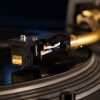






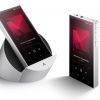
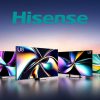
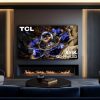

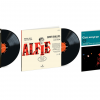
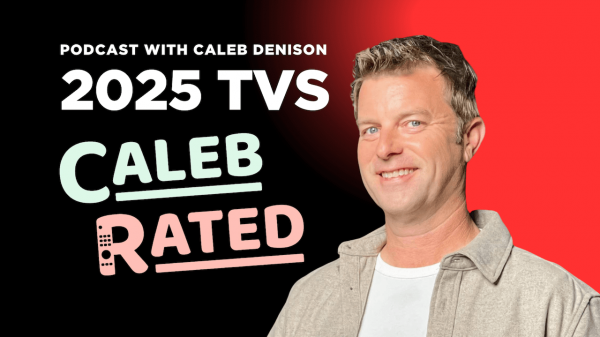



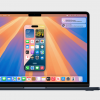



















Jason
October 19, 2024 at 5:46 pm
I have been running these MKII for about 6 months and ran the Classics previously for a few years. The MKII is certainly a significant step up in sound from the previous release.
You need to experience the bi-amp feature. It’s a major upgrade for these over the previous version.
I run a Denon 160W amp on the LF and a Rogue ST-100 for the mids and highs. I have no thoughts about adding an additional sub. It’s a monster sound with all the warmth and clarity still intact.
JBL did a nice job with the cross-over.
Cheers!
Jason
Richard L Johnson
October 19, 2024 at 10:51 pm
I sold the original L100s in the mid-70s. I never liked them, even a little. Boomy mid and no low bass; nasal mids and harsh treble. That all changed in the late 70s with the introduction of the L110, JBLs first computer-designed speaker. Compared to the well regarded ADS L-810, the L110 was more than competitive, with solid 40Hz bass, a very neutral midrange, and much smoother highs from JBLs first soft dome tweeter, as well as tremendous dynamics and power handling. I was hoping JBL would model the new L100 on the L110, but no such luck. Overall JBL is a vastly better product than it was in the Mid-70s, but I still could not recommend anyone dropping $5K on the new L100s.
Charles
October 22, 2024 at 5:45 pm
I own circa 1986 JBLL100 t3’s. They’re enhanced with a JBL B-380 Subwoofer. These speakers are a part of 2 2.1 systems and a 5.1 system. The sound is in a word, lifelike and they can also be as loud as life. The biggest divergence between my L100’s and today’s is mine are floor standing models and have wood veneer on all sides. At any rate, the best sound is when I pair my L100’s to a Technics SL-1210GR Turntable running a Shure V15 type III fitted with a JICO SAS-B Stylus Assembly.
Éric MORATA
December 8, 2024 at 1:49 pm
Bonjour,
J’ai bien connu les premières JBL L100 hifi.
Ces enceintes sont issues de la technologie professionnelle et principalement utilisées en studio d’enregistrements dans le monde entier
La version dite hifi se différencie par son habillage qui n’est pas noir (nouvelles versions pro).
Côté audio, ce sont des juges de paix avec une bon amplificateur dynamique ayant un temps de montée rapide (Crown XTI, Bryston, Mark Levinson) leur son est d’un réalisme impressionnant.
J’ai assisté à des tests comparatifs production > reproduction piano classique, jazz, guitare classique et guitare Fender blues, orgue Hammond et chant.
Les enregistrements ont été réalisés avec un Studer en 38cm/s et sur support CD.
L’écoute est bluffante particulièrement sur les fréquences médiums si difficiles à bien reproduire (3eme octave piano et orgue Hammond B3).
Le câblage était fait avec du Monster Câble + fiches Neutrik.
Les transducteurs sont d’origine Mexico et hélas .china, mais pas sous-traités JBL faisant partie des rares marques ayant leurs propres manufactures.
Un superbe investissement pour les passionnés d’audio, musiciens, mélomanes, audiophiles.
Ian White
December 8, 2024 at 2:41 pm
Eric,
Elles sont une partie importante de l’histoire des enceintes audio haut de gamme avec un public très fort.
Je suis d’accord qu’ils nécessitent le type d’amplificateur de puissance que vous avez mentionné.
Merci,
IW